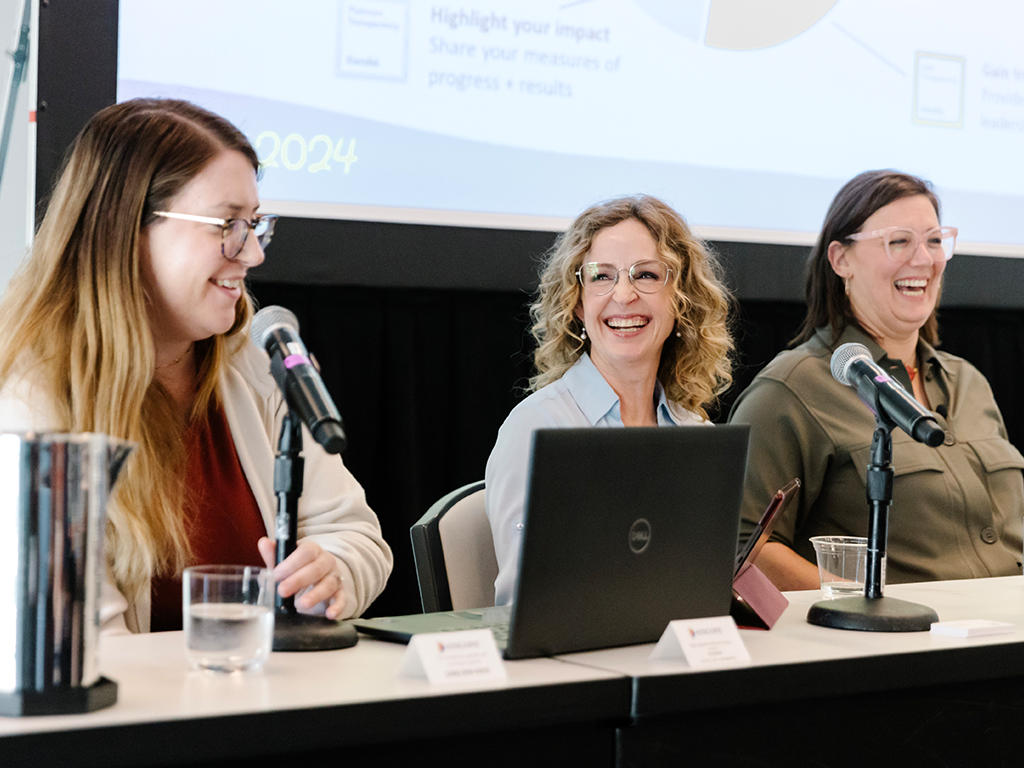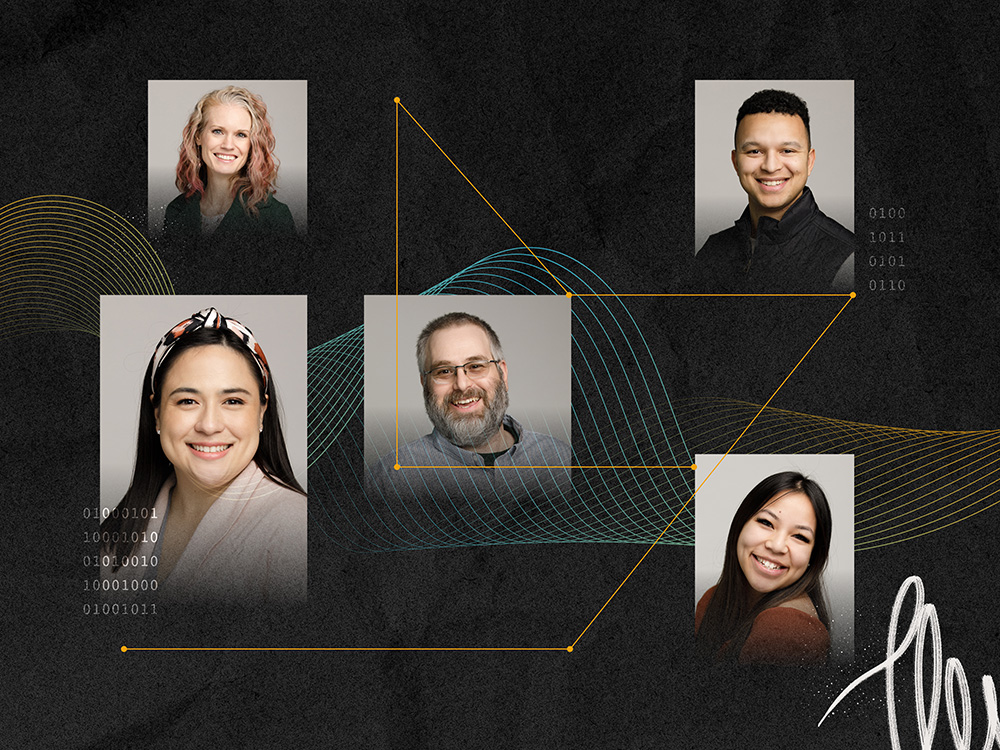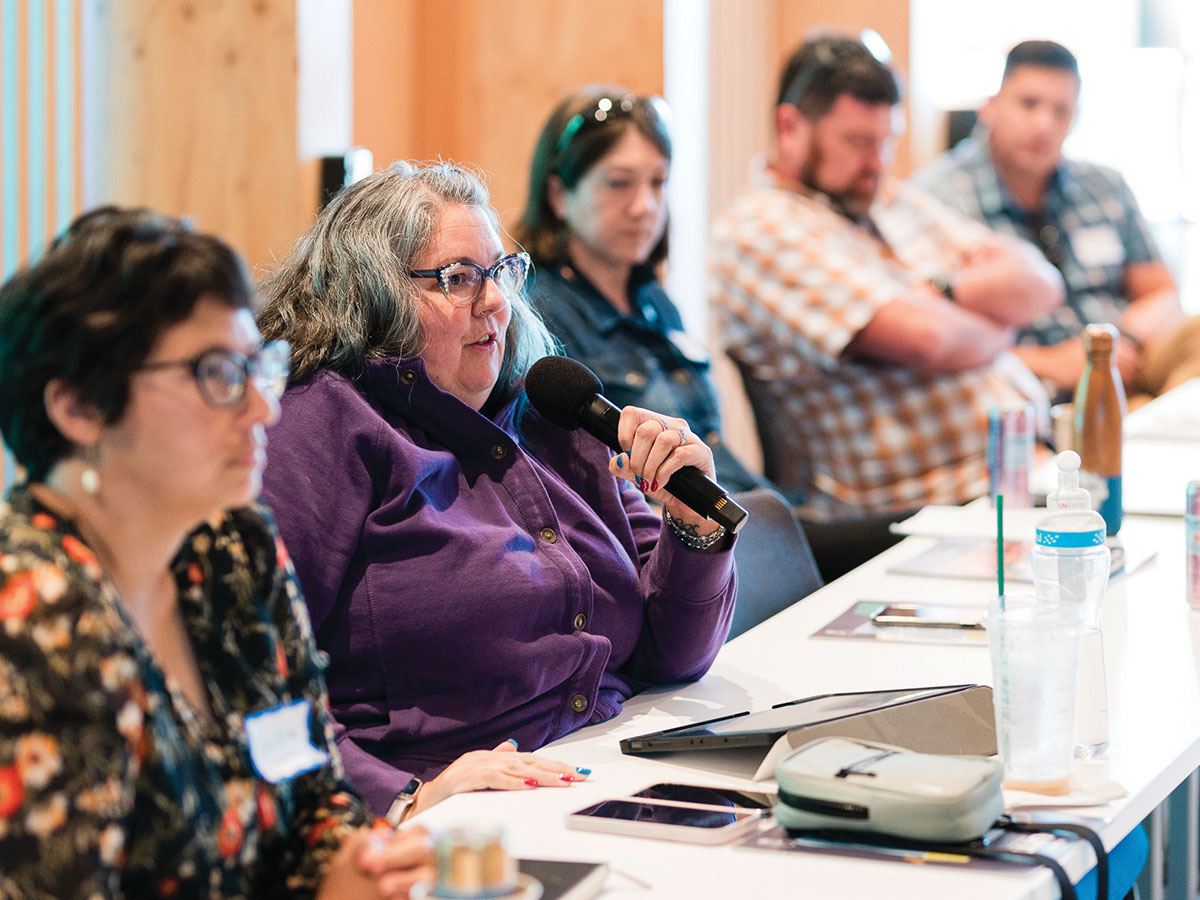Trends in Grants Management Technology: Relationship management, artificial intelligence, and data trusts

PEAK Grantmaking member Sam Caplan sat down with Jared Sheehan of PwrdBy to chat about trends in grants management technology. Sam is the founder of New Spark Strategy, a technology consulting and strategic planning firm. Prior to embarking on this venture, Sam served as the Chief Information Officer at the Walton Family Foundation and Director of Technology at the Walmart Foundation. Jared is the CEO and Co-Founder of PwrdBy, bringing AI-driven and mobile first technology solutions to nonprofits.
Jared Sheehan: Let’s dive into the role of a grants manager. What does a grant manager do? Why is it important? And how does the role interact with technology in the world of foundations?
Sam Caplan: There is a ton of work that goes into making a grant. If you’re in a grants management role, you’re really responsible for all of the mechanics that go into making a grant. Ensuring a grant application contains all of the required data, performing research on an organization, verifying they are a valid nonprofit, and working with that nonprofit to bring in any sort of documentation that’s needed to help make funding decisions (such as financial documents). For most foundations, grantmaking is a very administratively burdensome process. So the grants manager has the difficult job of managing that whole end-to-end process of making sure that all of the data has been collected, due diligence has been completed, and the information has been verified so the foundation can make the right decision about funding.
Jared: How have you seen the role of the grants manager change over the years and how is it going to continue to change?
Sam: I think it’s changed in a few important ways. Going back five years or so, the role of the grants manager was often viewed as being a sort of a “helper” to a program officer. Grants management, in general, is starting to get recognized for being a well-defined profession. A lot of foundations are elevating the role.
As we continue to rely on software and data to do our work, grants managers have started to become a combination of technologist and grants manager. In my role supporting the technology that’s used for grants management, I rely on the role of grants management to let me know exactly what’s working well, what’s not working, and what they need. Grants managers are coming up with great ideas on how to evolve the platforms in a way that makes them work better for everybody.
The third area where the role has evolved is some grants managers are dipping their toes into data science. We have all this amazing data about the grants that are being made at each of the foundations. Grants managers are starting to figure out how to mine that data and come up with new insights that are really important for their foundations. Looking a few years down the road, we’ll see those grants managers start to really figure out how to leverage data to help foundations begin to see some really interesting insights into the grantmaking that they’re doing.
Jared: Do you think that technology is helping the grants manager role become more visible in foundations?
Sam: For some foundations, that is definitely true. It is most true in foundations that have done a good job of implementing the right technology in the right way. Tech is enabling those grants managers to start stepping outside of their current role boundaries. When I mentioned data science there really is no better individual in a foundation to start looking at the data. Using that data they can ask really interesting questions and derive interesting insights. A grants manager has access to data that may span hundreds or thousands of grants in an organization.
Jared: You worked at Fluxx for a time. What was the biggest thing you learned there about grant management technology?
Sam: It became very clear to me how organizational processes really depend on technology. If a grants management system is running well, it can significantly reduce the amount of time it takes to get funding out the door, which, for most foundations, is a goal and key metric. If it’s not implemented well, or if there’s issues with the technology, work across the foundation may come grinding to a halt. It became really apparent to me just how critical it is for technologists and technology providers to get it right when it comes to grants management.
Jared: What’s the biggest gap right now in grants management technology? What are we missing the most?
Sam: From a technology perspective, I think what’s missing right now is a focus on relationship management. Many grants management platforms start the process with a grant application. But if you speak with foundation staff, they start talking to a nonprofit organization as much as a year before that organization is ever invited to apply for a grant. I feel there’s a big opportunity right now for the technology to do a better job of enabling foundation staff to start tracking all of their interactions and relationships with their nonprofit partners long before they get to the point of making that grant. Platforms should start thinking through how they’re going to significantly add to their customer relationship management (CRM) capability, so that they better meet their user’s needs.
Jared: Let’s talk about the future of grant management technology. Where are we going? What’s most exciting for you?
Sam: One component that is currently part of both CRM and grant management technology, but really needs to evolve, is incorporating artificial intelligence (AI) and machine learning with the role of a grants manager. I think there’s a huge opportunity to leverage AI to watch how a grants manager is interfacing with the system. That AI could begin to perform work that will make the process easier. AI could watch how grants managers are interfacing and start to make suggestions around checklist-based items or publicize alerts better than the system is capable of doing today. I think that’s going to be the next big evolution with grants management platforms.
Jared: Do you see AI as something that will be only technology-provider driven? Or do you think foundations will be able to set up their own AI programs?
Sam: I think there is a role for AI in any technology that’s used for work across a foundation or nonprofit. There are already a lot of amazing examples out there of how AI is helping nonprofits achieve their mission, at a level that goes way beyond just the administrative functions and actually gets into how the programmatic work is completed. I think that’s a fantastic opportunity for foundations right now. If you think about the role of the technologist at a foundation today, technology tends to focus mostly on that sort of back-office administrative work that is needed to get a grant or payment complete. I envision a time when technologists will be embedded directly in program teams to serve as subject-matter experts to help the program teams and their nonprofit partners better realize the potential of all this emerging technology.
Jared: Where do you see data governance evolving related to the grant management process?
Sam: I think there’s going to be a conversation around a couple different topics related to data. One being data ownership and the other being data access. One of the biggest challenges is that we function in silos and that, essentially, every foundation is a silo unto itself. If each foundation is collecting data, but they’re doing it in a way that is not associated with others in the sector (who could also benefit from that data), it becomes really hard to use that for measurement, evaluation, and learning. I’m very intrigued by the idea of a “data trust.”
There’s a great company out there called brighthive that’s working with a variety of players in the nonprofit sector to take data from various organizations and make it available in a way that multiple parties can leverage. If every funder were to collect similar data and then put it into a common database and then make that publicly available for everybody to see, we would start to be able to get a much better perception on whether or not philanthropy is actually making an impact or fixing broken systems.
Jared: I recently learned some foundations have been talking about accepting video-based grant applications instead of the standard web format. How might grant application forms change? Will video take over as the standard format?
Sam: Right now, there is this emerging conversation around what’s called “trust-based philanthropy,” which is all about figuring out how to make grantmaking more efficient and less burdensome to enable nonprofits to spend more time on actually achieving the mission of all of their social impact work. Some of the themes of trust-based philanthropy are how we can reduce the work that is required to apply for and receive funding from a large foundation. So that may mean we start to see things like video-based applications or greatly reduced application workflows and processes. I think it could mean we begin to see things like a common grant application emerge as a way to reduce grantee burden. So, it’s not purely a technical consideration. But I do think that grantmaking in two years is going to look fairly different than it does today.
The onus is on people like you and me – technologists, grants managers, nonprofits and their constituents – to ensure that we’re actively working together to figure out what are those things we can do from both a technology and process perspective to make all of this work easier, ultimately resulting in greater social impact.
This interview has been edited for length and clarity.




